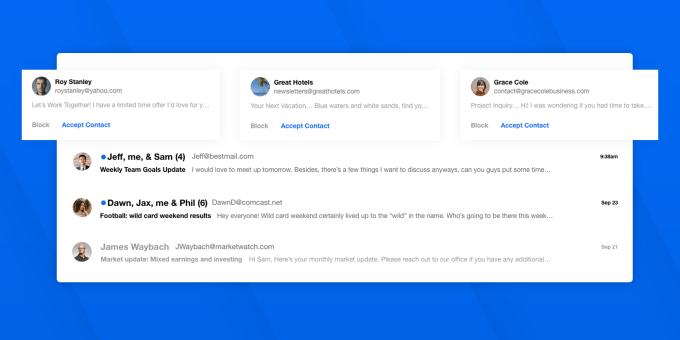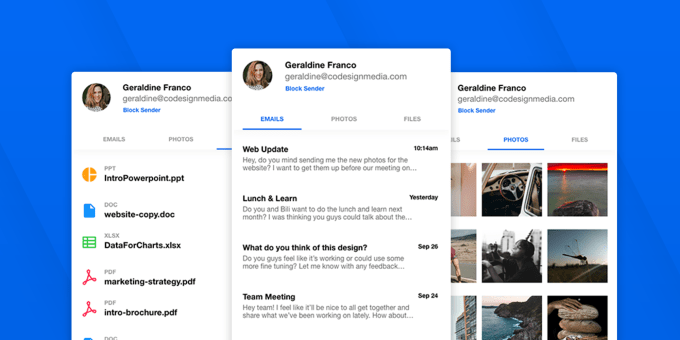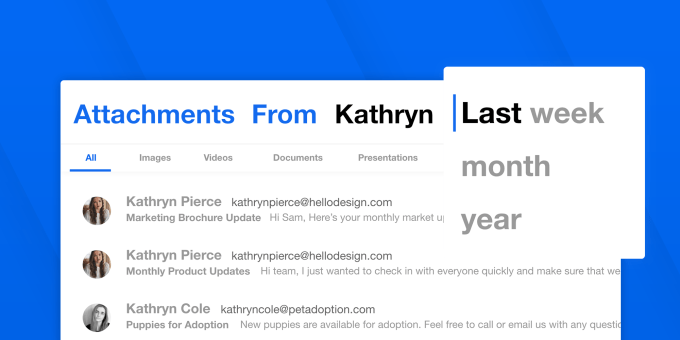What’s more illustrative of American capitalism than that day-after water cooler chat about the advertisements we saw during the Super Bowl? From food delivery apps to phones that were shockingly not made by Apple, tech companies commanded our attention last night, forcing us to explain to our friends that NFTs aren’t the same thing as cryptocurrency.
On scales of cringe and effectiveness, here are the Super Bowl’s best (and worst) tech ads.
Coinbase
A QR code bounced around the black screen like a DVD screensaver, cycling through bright colors while a generic techno song played.
I pulled out my phone to scan the QR code, because why not — my friend yelled from across the room, “Don’t do it! It could be a virus! Or worse, crypto!”
Sure enough, the QR code opened the Coinbase website on my phone, offering $15 in free Bitcoin for new users with no purchase necessary. According Coinbase Chief Product Officer Surojit Chatterjee, the ad was so popular that Coinbase experienced more traffic than it’s ever encountered.
Effectiveness: 6/10
Clearly the ad was effective because their website crashed from all the traffic. But since, you know, the website crashed, they have to lose some points.
I’m also not sold on the “Instead of talking about crypto, we decided to just… give you some” marketing tactic. Like any investment, knowing what you’re investing in is probably a good thing! Sure, you have to engage in the market to get a grasp on it, but also, it’s baffling that none of these crypto commercials actually explained what it is that they want consumers to invest in.
Cringe: 7/10
The retro aesthetic is actually kind of cool. The bouncing QR code was a risk, but I remember this ad more vividly than any others, so it worked. But the QR code directs you to a website with the offer information, and that website is a bit cringe. Coinbase writes “WAGMI” on the site, which is crypto-bro slang for “we are gonna make it,” which means, “we are one of the startups that isn’t going to burn out in a few years and cause many people to lose money.” But maybe saying WAGMI implies a fear that you’re NGMI?
FTX
Yet another cryptocurrency exchange platform, the Bahamas-based FTX reached a $32 billion valuation last month after raising another $400 million in funding. Some of that budget has to go to marketing, so why not hire the famous curmudgeon Larry David to film his first Super Bowl commercial?
The premise of the commercial is that the “Curb Your Enthusiasm” star is so skeptical of everything that he’s missed out on some great investments — he tells Edison that his lightbulb is NGMI (not a direct quote), and that using a dishwasher doesn’t make sense when you can just put the dishes in the shower (gross).
Larry David doesn’t understand crypto, so that means this emerging industry must be pretty, pretty, pretty good.
Effectiveness: 6/10
According to the New York Times, FTX and ad agency dentsuMB considered 80 scripts before deciding on this concept, which positions decentralized finance as a light bulb-like innovation. Then, after four days of filming with the “Seinfeld” co-creator, the ad took 280 hours to edit, condensing 7.5 hours of footage into 60 seconds — then, they spent another 200 hours to create teasers for their ad.
All in all, you gotta respect the effort (plus, Larry David is my problematic fave). But damn. That’s a lot of time and money to go into an ad that doesn’t teach you anything about how crypto works.
Cringe: 10/10
The ad features Larry David.
Crypto.com
Yet another crypto exchange with an exorbitant marketing budget, Crypto.com took a similar approach to FTX. They wanted star power, and they wanted to convince viewers that cryptocurrency is just a natural next step for technology. But their choice of talent was maybe more familiar for sports fans. In the thirty-second spot, LeBron James tells a younger version of himself that “if you want to make history, you gotta call your own shots.” Then, a Crypto.com logo appears on the screen.
Effectiveness: 7/10
We like to see sports stars on TV. But this ad told us even less about crypto than Coinbase and FTX did. Then again, this ad probably cost way less than FTX’s ad, rife with costumes and set changes and special effects.
Cringe: 8/10
I want to know more about the physics involved here. How did LeBron go back in time? Will telling his younger self about crypto rupture our current timeline so that LeBron never made the NBA, meaning that South Florida never had a successful professional sports team in the twenty-first century? So many questions.
Meta Quest 2
Not only did Facebook rebrand to Meta, but they also rebranded their VR headset from the Oculus Quest — the name of the VR company they acquired — to just the Meta Quest.
The ad is confusing and depressing. Basically, some animatronic musicians — who work together at a Chuck E. Cheese-like place — lose their jobs and can’t hang out anymore. But by using their Meta Quest 2, they can forget about life’s challenges and be legless avatars together in Horizon Worlds, the company’s social gathering app.
Effectiveness: 3/10
If the goal is brand recognition, well okay then. But the ad comes off kind of like, “Are you unsatisfied with the real world? Try the metaverse!” Also, Horizon Worlds is nowhere near as polished as the ad makes it seem, so minus points for ingenuity.
Cringe: 9/10
They could have tried to hire Larry David, but they did not.
Google Pixel 6
To showcase its Pixel 6 phone, Google collaborated with superstar Lizzo to highlight its Real Tone feature.
“Every single yearbook photo of mine has been terribly shot since I was a kid,” a voice narrates over a picture of friends in graduation garb — those with the darkest complexions blend into the background of the photo.
Then, Google shows photos taken with its Real Tone feature, which uses computational photography technology to properly expose photos of people with varying skin tones. The photos are gorgeous, displayed while Lizzo sings an unreleased track.
Effectiveness: 10/10
They got a new Lizzo song in their commercial. To quote TechCrunch’s own Annie Saunders, “I did not watch the Super Bowl, but I did see Lizzo’s Pixel ad on Instagram, and everything Lizzo does is Right and Good.”
Cringe: 2/10
There’s really nothing cringe here, but you could say Google’s market share in the smart phone business compared to Apple is a little cringe for them.
T-Mobile
Miley Cyrus and her godmother Dolly Parton teamed up to advertise T-Mobile’s 5G network in a series of two thirty-second spots. In the first ad, Dolly Parton appears in a PSA, urging people to switch over from AT&T or Verizon for the sake of their phones. Then, she calls Miley, urging her to use her voice to save the phones. In the next ad, we see Miley belting out heartfelt lyrics like “let’s do it for the phones/they do so much for you” in a recording studio. She even belts, quote, “T-Mobile” while wearing a black blazer and leather gloves.
Effectiveness: 7/10
I paid attention, because I think Dolly Parton and Miley Cyrus are fun. They might have punched down at other networks’ allegedly worse 5G coverage, but hey, in the spirit of football, go for that tackle or something.
Cringe: 9/10
It’s giving cheugy, not camp.
Uber Eats
On Uber Eats, you can order home essentials like tinfoil, sponges and candles — not just food. So, the ad shows us what happens when celebrities like Jennifer Coolidge, Gwyneth Paltrow, Trevor Noah and Nicholas Braun get confused about what is or is not food.
Effectiveness: 8/10
I now know that I can get tinfoil in a pinch on Uber Eats. But this feels like it’s covering up a marketing “oopsie,” like maybe when they launched Uber Eats, they should’ve chosen a name that would encompass what they refer to as both “eats and not eats.”
Cringe: 8/10
They used the song “Oh No” by Capone, which went viral on TikTok about a year ago. It’s kind of cringe to appeal to a younger audience by leveraging a trend that is no longer relevant.
Amazon
Since the release of smart home, voice-controlled devices, Amazon has had to mitigate a recurring fear among consumers: is Alexa watching me? Does she know too much? What if she becomes too powerful?
But, Amazon decided to show an audience of millions of viewers what would happen if Alexa could read your mind. When actress Scarlett Johansson wakes up next to her husband, “Saturday Night Live”‘s Colin Jost, Alexa reads his mind and places an order for extra-strength mouth wash. When Johansson wants Jost to stop talking, Alexa activates their loud blender.
Effectiveness: 6/10
Ultimately, Jost and Johansson decide that that mind-reading devices would ultimately be bad, but… I guess the point of the commercial is to entertain, not to explain what the product does? Jost does successfully ask his smart device to turn on the TV, though, which does display some of Alexa’s less-terrifying skills. It’s because it’s like she can read your mind, she doesn’t actually read your mind … right?
Cringe: 7/10
The ad was kind of funny! But laughing at an advertisement made by Amazon is cringe. We are bringing the cringe here, it’s our fault.
Amazon teased that Prime Video will become the exclusive home for Thursday night football, marking the first year of an eleven-year deal between Amazon and the NFL.
Effectiveness: 9/10
Starting September 15, fans can watch Thursday night football games exclusively on Prime Video. It’s clear! It’s short! It’s an advertisement specifically geared toward the audience of football fans, and guess who watches the Super Bowl? Football fans!
Cringe: 5/10
“We have to live in this world without games all the way until next season,” the voiceover tells us while someone grows a huge, unruly beard due to his post-football depression. Bestie, other sports exist!



